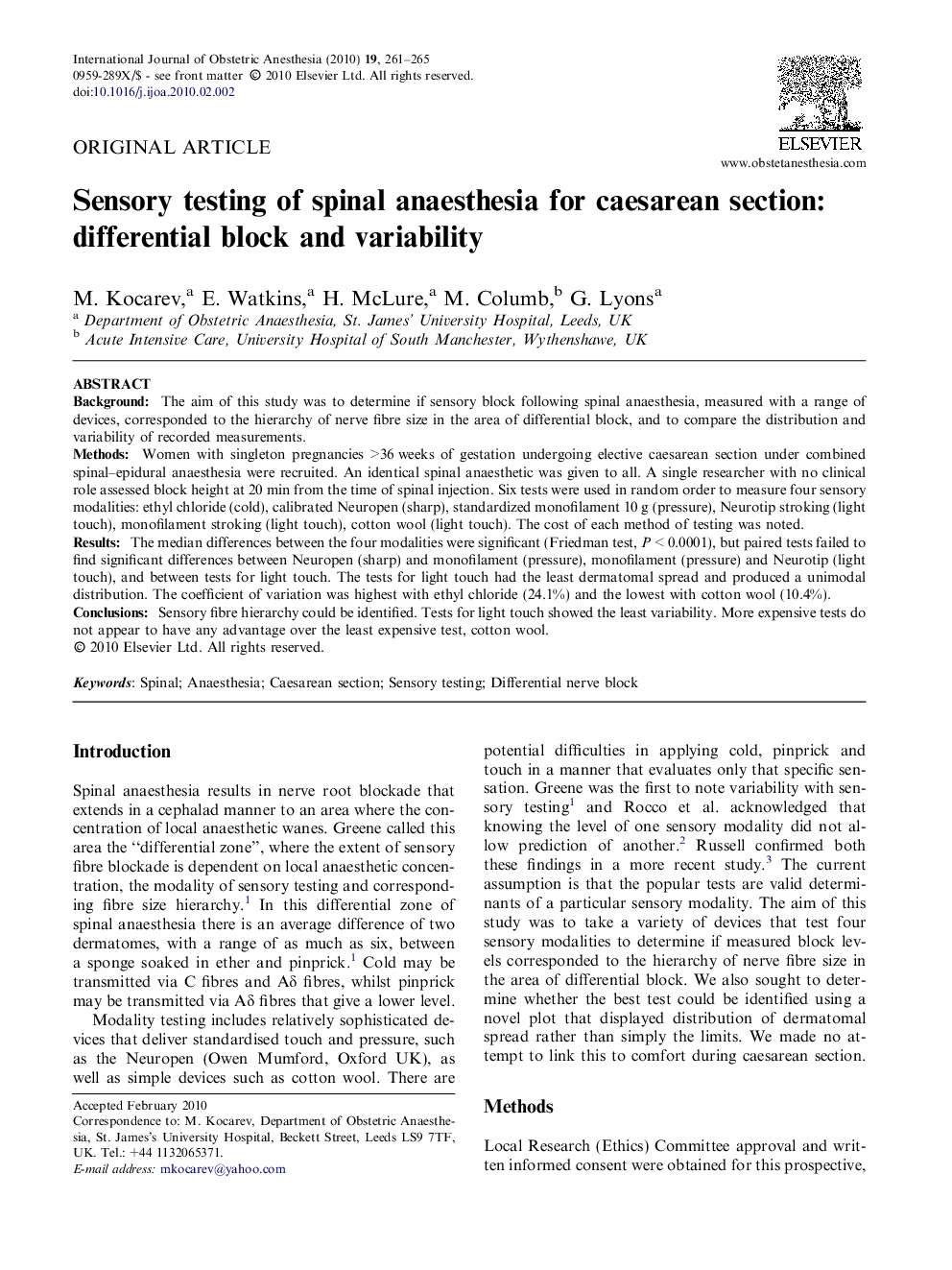| Article ID | Journal | Published Year | Pages | File Type |
|---|---|---|---|---|
| 2758157 | International Journal of Obstetric Anesthesia | 2010 | 5 Pages |
BackgroundThe aim of this study was to determine if sensory block following spinal anaesthesia, measured with a range of devices, corresponded to the hierarchy of nerve fibre size in the area of differential block, and to compare the distribution and variability of recorded measurements.MethodsWomen with singleton pregnancies >36 weeks of gestation undergoing elective caesarean section under combined spinal–epidural anaesthesia were recruited. An identical spinal anaesthetic was given to all. A single researcher with no clinical role assessed block height at 20 min from the time of spinal injection. Six tests were used in random order to measure four sensory modalities: ethyl chloride (cold), calibrated Neuropen (sharp), standardized monofilament 10 g (pressure), Neurotip stroking (light touch), monofilament stroking (light touch), cotton wool (light touch). The cost of each method of testing was noted.ResultsThe median differences between the four modalities were significant (Friedman test, P < 0.0001), but paired tests failed to find significant differences between Neuropen (sharp) and monofilament (pressure), monofilament (pressure) and Neurotip (light touch), and between tests for light touch. The tests for light touch had the least dermatomal spread and produced a unimodal distribution. The coefficient of variation was highest with ethyl chloride (24.1%) and the lowest with cotton wool (10.4%).ConclusionsSensory fibre hierarchy could be identified. Tests for light touch showed the least variability. More expensive tests do not appear to have any advantage over the least expensive test, cotton wool.
